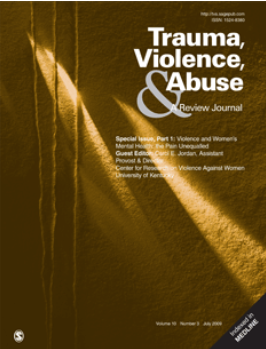2000 年至 2020 年美国性侵犯案件自然减员系统回顾
IF 5.4
1区 社会学
Q1 CRIMINOLOGY & PENOLOGY
引用次数: 0
摘要
本文系统回顾了 2000 年至 2020 年间有关五种性侵犯案件结果(立案、逮捕、移交起诉、指控和定罪)的研究成果。记录从 PsychINFO 和 ProQuest 收集而来,必须至少报告一项定量刑事司法结果,包含来自美国样本的数据,并涉及原创性研究。共分析了 36 条记录(288,066 个性侵犯案例)。结果按报告案件、移交案件、指控案件和受害者年龄进行了分层。研究显示,72.09%-92.66%的抽样案件成立(中=89.21%),17.73%-53.42%的案件导致逮捕(中=27.25%),13.60%-69.57%的案件导致转介(中=31.36%),3.28%-83.16%的案件导致起诉(中=19.58%),只有1.86%-40.31%的案件导致定罪(中=8.28%)。案件结果的这种巨大差异与纳入或排除案件的不同有关(例如,年龄标准、只抽查有性侵犯工具包的案件);因此,这些研究并不能反映所有的性侵犯案件。这些研究最有可能报告的是逮捕率,其次是指控率、转介率、定罪率和立案率。总体而言,我们对 20 世纪 80 年代至 2010 年代初中西部和加利福尼亚州南部青少年-成年人性侵犯案件的损耗情况有了一个很好的了解。我们需要对美国其他地区,尤其是农村地区进行更多更新的研究。本文就更精确的测量和报告方法提出了具体建议,以提高我们对自然减员的认识,并加强对需要干预的地点、方式和对象的认识。本文章由计算机程序翻译,如有差异,请以英文原文为准。
A Systematic Review of Sexual Assault Case Attrition in the United States from 2000 to 2020
This article systematically reviewed research findings of five sexual assault case outcomes (founding, arrest, referral to prosecution, charging, and conviction) between 2000 and 2020. Records were collected from PsychINFO and ProQuest and had to report at least one quantitative criminal justice outcome, include data from a U.S. sample and involve original research. Thirty-six records (288,066 sexual assault cases) were analyzed. Results were stratified by reported cases, referred cases, charged cases, and victim age. Studies show that 72.09% to 92.66% of sampled cases are founded ( M = 89.21%), 17.73% to 53.42% result in arrest ( M = 27.25%), 13.60% to 69.57% result in referral ( M = 31.36%), 3.28% to 83.16% result in charging ( M = 19.58%), and only 1.86% to 40.31% result in conviction ( M = 8.28%). This considerable variability in case outcomes is related to differences in cases included or excluded (e.g., age criterion, only sampling cases with sexual assault kits); thus, these studies are not reflective of all sexual assault cases. Studies were most likely to report arrest rates, followed by charging, referral, conviction, and founding. Overall, we have a good picture of what attrition looks like in adolescent-adult sexual assault cases from the 1980s to early 2010s in the Midwest and Southern CA. More updated research in the remaining parts of the country is needed, particularly from rural locales. Specific recommendations for more precise measurement and reporting methods are provided to improve our understanding of attrition and strengthen where, how, and with whom interventions are needed.
求助全文
通过发布文献求助,成功后即可免费获取论文全文。
去求助
来源期刊

Trauma Violence & Abuse
Multiple-
CiteScore
13.60
自引率
7.80%
发文量
131
期刊介绍:
Trauma, Violence, & Abuse is devoted to organizing, synthesizing, and expanding knowledge on all force of trauma, abuse, and violence. This peer-reviewed journal is practitioner oriented and will publish only reviews of research, conceptual or theoretical articles, and law review articles. Trauma, Violence, & Abuse is dedicated to professionals and advanced students in clinical training who work with any form of trauma, abuse, and violence. It is intended to compile knowledge that clearly affects practice, policy, and research.
 求助内容:
求助内容: 应助结果提醒方式:
应助结果提醒方式:


